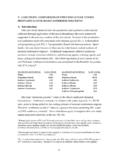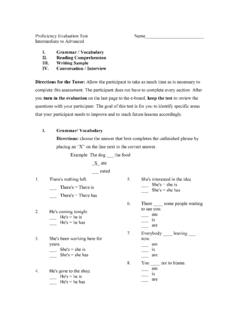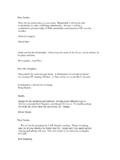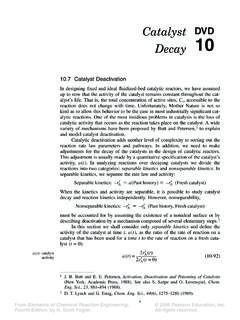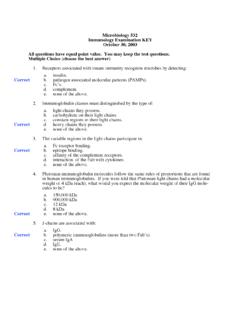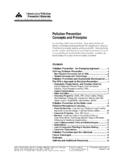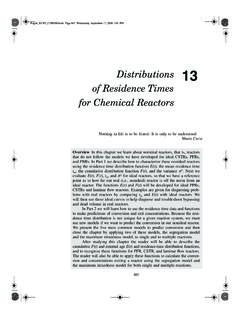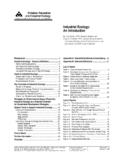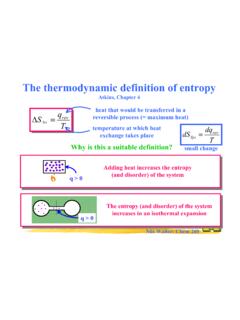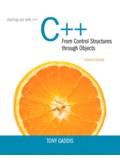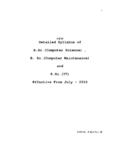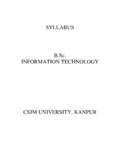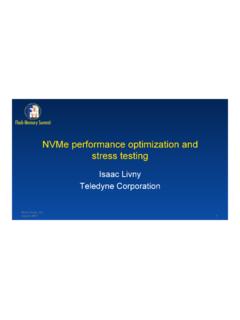Transcription of Using C++11’s Smart Pointers - University of Michigan
1 Using C++11 s Smart PointersDavid Kieras, EECS Department, University of MichiganJune 2016 This tutorial deals with C++11's Smart pointer facility, which consists unique_ptr, shared_ptr and its partner, weak_ptr, and some associated functions and template classes. See the posted code examples for the examples presented of the C++11 Smart PointersSmart Pointers are class objects that behave like built-in Pointers but also manage objects that you create with new so that you don't have to worry about when and whether to delete them - the Smart Pointers automatically delete the managed object for you at the appropriate time.
2 The Smart pointer is defined in such a way that it can be used syntactically almost exactly like a built-in (or "raw") pointer. So you can use them pretty much just by substituting a Smart pointer object everywhere that the code would have used a raw pointer. A Smart pointer contains a built-in pointer, and is defined as a template class whose type parameter is the type of the pointed-to object, so you can declare Smart Pointers that point to a class object of any type. When it comes to dynamically-allocated objects, we often talk about who "owns" the object. "Owning" something means it is yours to keep or destroy as you see fit.
3 In C++, by ownership, we mean not just which code gets to refer to or use the object, but mostly what code is responsible for deleting it. If Smart Pointers are not involved, we implement ownership in terms of where in the code we place the delete that destroys the object. If we fail to implement ownership properly, we get memory leaks, or undefined behavior from trying to follow Pointers to objects that no longer exist. Smart Pointers make it easier to implement ownership correctly by making the Smart pointer destructor the place where the object is deleted. Since the compiler ensures that the destructor of a class object will be called when the object is destroyed, the Smart pointer destruction can then automatically handle the deletion of the pointed-to object.
4 The Smart pointer owns the object and handles the deletion for tutorial first presents shared_ptr, which implements shared ownership. Any number of these Smart Pointers jointly own the object. The owned object is destroyed only when its last owning Smart pointer is destroyed. In addition, a weak_ptr doesn't own an object at all, and so plays no role in when or whether the object gets deleted. Rather, a weak_ptr merely observes objects being managed by shared_ptrs, and provides facilities for determining whether the observed object still exists or not. C++11's weak_ptrs are used with shared_ptrs.
5 Finally, unique_ptr implements unique ownership - only one Smart pointer owns the object at a time; when the owning Smart pointer is destroyed, then the owned object is automatically to Access the C++11 Smart a C++11 implementation, the following #include is all that is needed:#include <memory> 1 Shared Ownership with shared_ptrThe shared_ptr class template is a referenced-counted Smart pointer; a count is kept of how many Smart Pointers are pointing to the managed object; when the last Smart pointer is destroyed, the count goes to zero, and the managed object is then automatically deleted.
6 It is called a "shared" Smart pointer because the Smart Pointers all share ownership of the managed object - any one of the Smart Pointers can keep the object in existence; it gets deleted only when no Smart Pointers point to it any more. Using these can simplify memory management, as shown with a little example diagrammed below: Suppose we need two containers (A and B) of Pointers referring to a single set of objects, X1 through X3. Suppose that if we remove the pointer to one of the objects from one of the containers, we will want to keep the object if the pointer to it is still in the other container, but delete it if not.
7 Suppose further that at some point we will need to empty container A or B, and only when both are emptied, we will want to delete the three pointed-to objects. Suppose further that it is hard to predict in what order we will do any of these operations ( this is part of a game system where the user's activities determines what will happen). Instead of writing some delicate code to keep track of all the possibilities, we could use Smart Pointers in the containers instead of built-in Pointers . Then all we have to do is simply remove a pointer from a container whenever we want, and if it turns out to be the last pointer to an object, it will get "automagically" deleted.
8 Likewise, we could clear a container whenever we want, and if it has the last Pointers to the objects, then they all get deleted. Pretty neat! Especially when the program is a lot more complicated!However, a problem with reference-counted Smart Pointers is that if there is a ring, or cycle, of objects that have Smart Pointers to each other, they keep each other "alive" - they won't get deleted even if no other objects in the universe are pointing to them from "outside" of the ring. This cycle problem is illustrated in the diagram below that shows a container of Smart Pointers pointing to three objects each of which also point to another object with a Smart pointer and form a ring.
9 If we empty the container of Smart Pointers , the three objects won't get deleted, because each of them still has a Smart pointer pointing to them. C++11 includes a solution: "weak" Smart Pointers : these only "observe" an object but do not influence its lifetime. A ring of objects can point to each other with weak_ptrs, which point to the managed object but do not keep it in existence. This is shown in the diagram below, where the "observing" relations are shown by the dotted arrows. X1X3X2ptrptrptrcontainers of pointersptrptrptrABspspspspspspcontainer of Smart pointersobjects pointing to another object with a Smart pointer 2 If the container of Smart Pointers is emptied, the three objects in the ring will get automatically deleted because no other Smart Pointers are pointing to them; like raw Pointers , the weak Pointers don't keep the pointed-to object "alive.
10 " The cycle problem is solved. But unlike raw Pointers , the weak Pointers "know" whether the pointed-to object is still there or not and can be interrogated about it, making them much more useful than a simple raw pointer would be. How is this done?How they workA lot of effort over several years by the Boost group ( ) went into making sure the C++11 Smart Pointers are very well-behaved and as foolproof as possible, and so the actual implementation is very subtle. But a simplified sketch of the implementation helps to understand how to use these Smart Pointers . Below is a diagram illustrating in simplified form what goes on under the hood of shared_ptr and weak_ptr.

